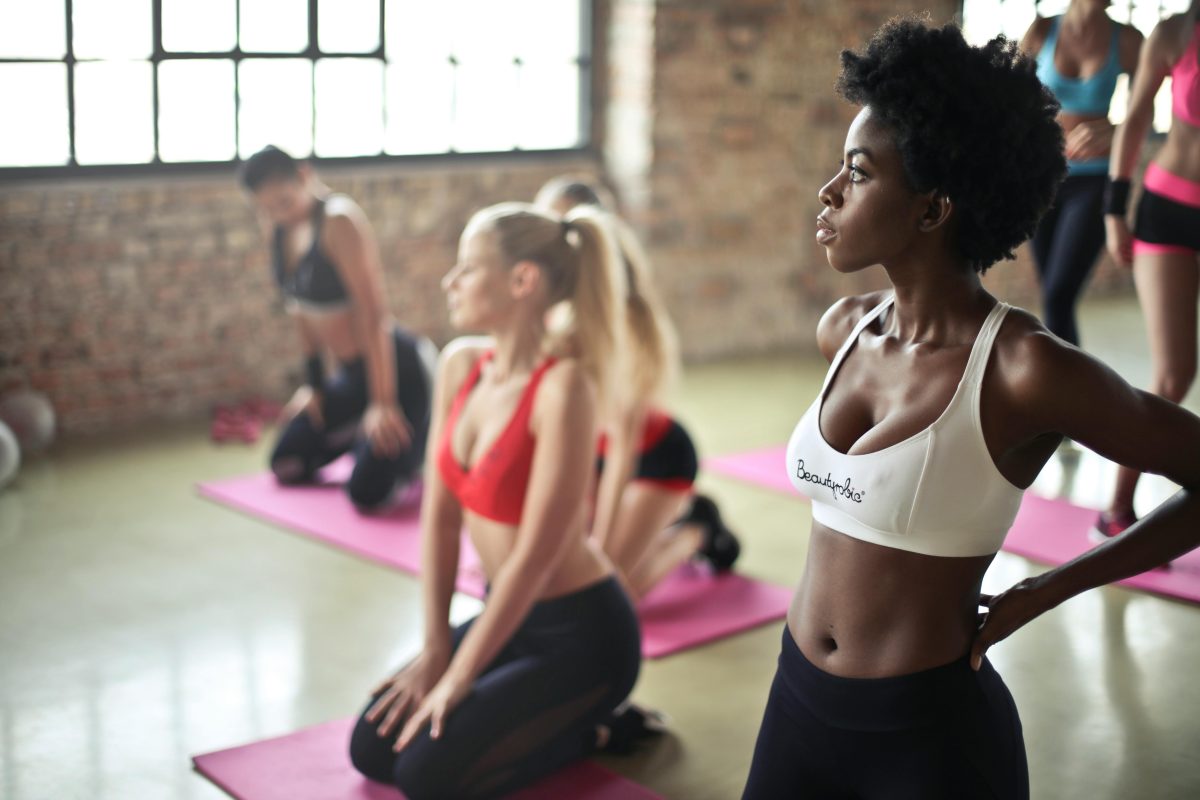Last Updated on: 14th July 2024, 09:30 am
Introduction to Yoga and Its Diversity

Yoga, with its roots deeply embedded in ancient Indian philosophy, has evolved over thousands of years into a diverse and global phenomenon. Its journey from the mystic East to the bustling West has seen it adapt and morph into various forms, each with its unique appeal. Today, yoga is not just a practice but a global community, embracing millions who seek physical health, mental clarity, and spiritual growth.
The popularity of yoga has skyrocketed, transcending cultural and geographical boundaries. Its universal appeal lies in its versatility and adaptability, making it accessible to everyone, regardless of age, fitness level, or lifestyle. This global adaptation has led to the emergence of numerous styles, from the serene and meditative to the physically demanding and everything in between.
- Choosing the right type of yoga is crucial. It’s about aligning your personal needs and goals with the practice.
- Whether seeking to enhance flexibility, build strength, reduce stress, or find spiritual peace, there’s a yoga style that resonates with everyone’s unique path.
- This diversity not only makes yoga inclusive but also allows individuals to embark on a deeply personal and transformative journey.
Hatha Yoga: The Foundation of Physical Practices

Definition and Characteristics of Hatha Yoga
Hatha Yoga stands as the cornerstone of physical yoga practices, emphasizing a balanced approach to mind and body through asanas (postures), pranayama (breathing techniques), and meditation. Characterized by its slow pace and gentle movements, Hatha Yoga serves as an excellent entry point for beginners, guiding practitioners to a state of physical and mental equilibrium. Its methodical nature allows for deep introspection and a profound connection with the self.
Pros of Hatha Yoga
- Accessibility: Ideal for beginners or those seeking a meditative practice.
- Stress Relief: Slow and gentle movements offer a sanctuary from daily life.
- Body Awareness: Nurtures flexibility and strength in a welcoming environment.
Cons of Hatha Yoga
- Mild Intensity: May not satisfy those craving a vigorous physical challenge.
- Leisurely Pace: Focus on gentle postures may not appeal to adrenaline seekers.
In the vast landscape of yoga, Hatha Yoga shines as a beacon for beginners and those seeking a serene, grounding practice. While it may not cater to the desires of adrenaline seekers, its benefits in stress reduction, flexibility, and mental clarity cannot be overstated. As we explore the diverse world of yoga, Hatha Yoga remains a fundamental chapter in the story of this ancient discipline, inviting everyone to step onto the mat and discover their path to wellness.
Vinyasa Yoga: The Flow of Movement and Breath
Vinyasa Yoga stands out in the yoga spectrum with its dynamic, flowing sequences that marry movement with breath. Unlike the static holds of Hatha, Vinyasa is akin to a dance, with each posture seamlessly transitioning into the next. This fluidity makes it a vibrant and energizing practice, appealing to those who seek both physical and mental engagement in their exercise routine.
- Cardiovascular Workout: Enhances heart health and promotes endurance.
- Muscle Tone and Flexibility: Improves through constant movement and strength.
- Mental Focus: Synchronized breathing helps sharpen focus and mindfulness.
However, Vinyasa’s dynamic nature may pose challenges for beginners. The pace and complexity of sequences can be daunting, requiring a level of physical fitness and familiarity with basic yoga poses. Additionally, the risk of injury looms if movements are performed incorrectly or without proper alignment. This underscores the importance of practicing under the guidance of an experienced instructor, especially for those new to this style.
In the broader context of yoga’s diverse practices, Vinyasa Yoga offers a unique blend of physical exertion and meditative focus. It caters to those who thrive on movement and seek a practice that challenges both body and mind. While it may demand more from its practitioners initially, the rewards of improved strength, flexibility, and mental clarity make it a compelling choice for many.
Bikram and Hot Yoga: Turning Up the Heat
Bikram Yoga, a series of 26 postures and two breathing exercises performed in a room heated to 105°F with 40% humidity, introduces practitioners to the intense discipline of Hot Yoga. This heated environment is designed to mimic the climate of India, providing a challenging yet rewarding experience. Hot Yoga, more broadly, encompasses various yoga styles practiced in heated rooms, aiming to deepen poses through increased flexibility and sweat-induced detoxification.
- Enhanced Flexibility: Heat allows muscles to stretch further, reducing injury risk.
- Detoxification: Sweating helps flush out toxins through the skin.
- Weight Loss: The body works harder in the heat, burning calories.
However, this intense environment is not without its drawbacks. The risk of dehydration and heat-related issues such as heatstroke looms large, making it imperative for practitioners to stay well-hydrated and listen to their bodies. Furthermore, Bikram and Hot Yoga may not be suitable for everyone, especially those with certain health conditions or a low tolerance for heat. It’s crucial to consult with a healthcare provider before diving into the heat.
In the landscape of yoga’s diverse practices, Bikram and Hot Yoga stand out for those seeking to turn up the heat on their physical and mental discipline. While the benefits of enhanced flexibility, detoxification, and potential weight loss are enticing, it’s important to approach these practices with caution and awareness of the potential risks. As with any yoga practice, aligning personal health and fitness goals with the chosen style is key to a fulfilling and safe yoga journey.
Ashtanga Yoga: The Rigorous Discipline
Ashtanga Yoga, known for its structured and demanding nature, stands as a beacon for those seeking a challenging yet rewarding physical and mental practice. This methodical approach to yoga is characterized by six series of asanas, each increasing in difficulty, designed to be practiced sequentially. This progression not only builds physical strength and stamina but also promotes an unparalleled sense of discipline and focus.
The benefits of Ashtanga Yoga are significant. It excels in building core strength and enhancing stamina, thanks to its dynamic and physically demanding sequences. The highly structured progression ensures that practitioners continuously challenge themselves, fostering a deep sense of achievement. Moreover, the discipline required to adhere to its rigorous routine promotes a transformative journey, not just physically, but mentally and spiritually.
However, Ashtanga Yoga is not without its challenges. Its intensity and complexity can be intimidating for beginners, potentially deterring those new to yoga from exploring this dynamic practice. Additionally, the risk of injury looms if one is not properly guided or attempts to progress too quickly without mastering the foundational postures. This underscores the importance of practicing under the guidance of an experienced instructor, who can ensure proper alignment and prevent injury.
In the diverse world of yoga, Ashtanga Yoga offers a unique blend of physical challenge and mental discipline. While it may demand more from its practitioners, the rewards of improved strength, flexibility, and mental clarity make it a compelling choice for many. However, it’s crucial for beginners to approach this practice with caution and seek the guidance of experienced instructors to navigate its demands safely and effectively.
Restorative Yoga: The Art of Relaxation

Embracing the Gentle Approach of Restorative Yoga
Restorative Yoga emerges as a sanctuary for relaxation, a practice where stillness and ease are paramount. This gentle form of yoga focuses on the power of rest and recovery, using props like bolsters, blankets, and blocks to support the body in various poses. The aim is to create a nurturing environment for the body to release tension, allowing the mind to quieten and the spirit to rejuvenate.
Pros of Restorative Yoga
- Renowned for its stress-relieving qualities, Restorative Yoga is a balm for the weary.
- It’s a practice that welcomes all, regardless of yoga experience or physical ability.
- By encouraging deep relaxation, it supports the body’s healing processes, making it an ideal complement to recovery from illness or injury.
- The gentle nature of Restorative Yoga makes it a universal tool for calming the nervous system and fostering a sense of inner peace.
Cons of Restorative Yoga
- Those in pursuit of a traditional workout may find Restorative Yoga lacking in vigor.
- It’s a practice that demands patience, as poses are held for extended periods, often up to ten minutes.
- This slow pace is designed to deepen relaxation but may not align with the goals of those seeking a more dynamic or physically challenging session.
- Time, too, is a consideration, as the full benefits of Restorative Yoga are best experienced through longer practices.
In the tapestry of yoga practices, Restorative Yoga holds a special place for its therapeutic qualities and its emphasis on stillness. While it may not meet the needs of those looking for an aerobic challenge, its capacity to alleviate stress and promote healing is unparalleled. As we navigate the various paths of yoga, Restorative Yoga stands out as a profound journey into tranquility, inviting practitioners to explore the restful depths of their being.
Choosing the Right Yoga for You

Embarking on a yoga journey is akin to setting sail on a vast ocean of self-discovery and wellness. The key to a fulfilling voyage lies in selecting the right type of yoga that resonates with your physical condition, personal goals, and lifestyle. This choice is pivotal, as it ensures your practice enriches both body and soul, aligning with your aspirations for health, tranquility, or spiritual growth.
- Physical condition cannot be overlooked. It dictates the pace and intensity suitable for you, ensuring safety and enjoyment.
- Personal goals also play a crucial role. Are you in pursuit of inner peace, physical vigor, or a balanced state of mind? Your objectives guide the path forward.
- Lifestyle, too, is a determining factor. With the demands of daily life, finding a yoga practice that seamlessly integrates into your routine is essential.
Exploration is encouraged. Dive into the diversity of yoga by trying different styles and teachers. Each brings a unique flavor, a new perspective that enriches your understanding and experience. This journey of exploration is not just about finding what you like but also discovering what challenges and grows you.
Listening to your body is paramount. It speaks a language of comfort and caution, guiding you towards practices that nurture and away from those that strain. Making adjustments, whether in the choice of style or the intensity of practice, is not just wise—it’s necessary. This attentiveness ensures a practice that is both sustainable and rewarding, a true companion on your path to wellness.
In the grand tapestry of yoga, finding the right thread to weave into your life can transform your practice into a source of strength, peace, and joy. Let your physical condition, personal goals, and lifestyle be your compass, leading you to the yoga that resonates most deeply. Embrace the journey, for it is in this exploration that the true essence of yoga is discovered.
In Closing
Yoga is a journey, not a destination. It offers a path to wellness that is as diverse as its practitioners. Through the exploration of different yoga styles, individuals can find a practice that not only challenges but also nurtures and grows them. From the physical rigor of Ashtanga to the tranquil stillness of Restorative Yoga, each style holds the potential to transform, heal, and enlighten. Embrace this journey with an open heart and mind, allowing yoga to be your guide to a balanced and fulfilling life.
The Pros and Cons of Different Types of Yoga FAQs
Kundalini Yoga is highly regarded for its potential to improve mental health by releasing the kundalini energy believed to be trapped in the lower spine. Through its unique combination of postures, breathing exercises, and meditation, it aims to enhance self-awareness and inner peace. This practice can be particularly beneficial for those dealing with stress, anxiety, or depression.
Power Yoga is an intense workout that can certainly help in building muscle strength, focusing on a faster pace and more physically demanding postures. It combines the benefits of strength training and flexibility, making it an excellent choice for those looking to tone their body and improve overall fitness. This style is best suited for individuals seeking a vigorous exercise routine.
Restorative Yoga can be particularly effective in alleviating sleep disorders, thanks to its gentle, calming exercises and use of props to support the body in a relaxed state. This form of yoga emphasizes relaxation and stress reduction, which can improve sleep quality. It is an ideal practice for those seeking to unwind and achieve a deeper sense of peace before bedtime.
Ashtanga Yoga is known for its rigorous style and strict sequence of poses, making it suitable for those looking for a challenging workout. It combines breathing with movement, resulting in improved circulation, a light and strong body, and a calm mind. This type of yoga is less flexible in structure compared to others, requiring dedication and discipline.
Yin Yoga targets the deep connective tissues, like the fascia, ligaments, and joints, which are not often exercised in more active forms of yoga. By holding poses for longer periods, it helps in increasing circulation in the joints and improving flexibility. This practice is also a meditative approach to yoga, offering mental calmness and stress reduction.
Bikram Yoga, with its series of 26 postures performed in a hot room, can aid in weight loss by facilitating more intense sweating and calorie burn. The heat enhances flexibility and detoxification, reducing the risk of injury while promoting deeper stretching. However, it may not be suitable for everyone, especially those with cardiovascular issues or intolerance to high temperatures.
Iyengar Yoga is highly beneficial for individuals with injuries or chronic conditions due to its use of props and focus on alignment. These elements allow for modifications and a deeper understanding of each posture, promoting safety and individual progress. It’s an excellent choice for those who need a more therapeutic approach to yoga practice.
Hatha Yoga is excellent for beginners due to its slower pace, which helps in mastering the postures and breathing techniques. It focuses on physical and mental strength building, promoting a sense of calm and balance. This practice is beneficial for stress relief and improving flexibility and strength.
Hot Yoga, while beneficial for flexibility and detoxification, poses risks such as dehydration and heat-related illnesses due to the high temperatures in which it’s practiced. The intense environment can also lead to overstretching and potential injury. It’s important for practitioners to stay hydrated and listen to their bodies to avoid adverse effects.
Vinyasa Yoga stands out for its fluid transitions between poses, synchronized with the breath, making it akin to a dynamic dance. This style keeps you moving almost constantly, which can help improve cardiovascular fitness while also increasing muscle strength and flexibility. It’s particularly appealing to those who seek variety and creativity in their workouts.
Orlando is a all round athlete from Australia, now resident in Germany. His sports of passion of American Football(Offensive line), weight training and indoor rock climbing where he uses his 195cm wing span to his advantage.



